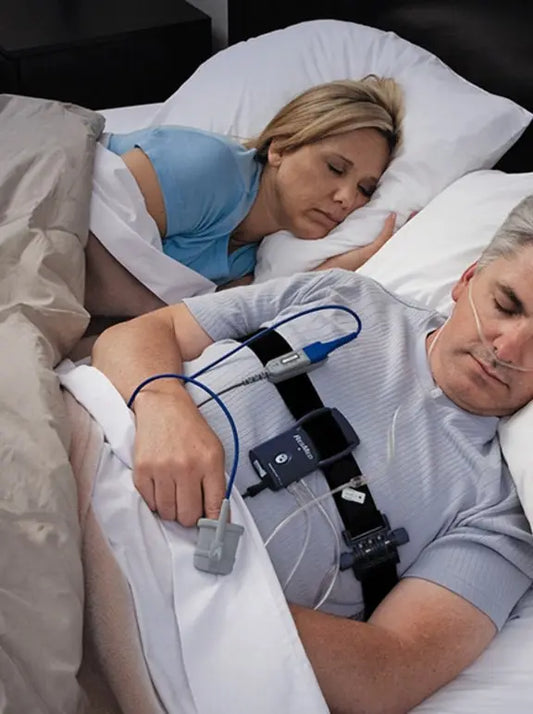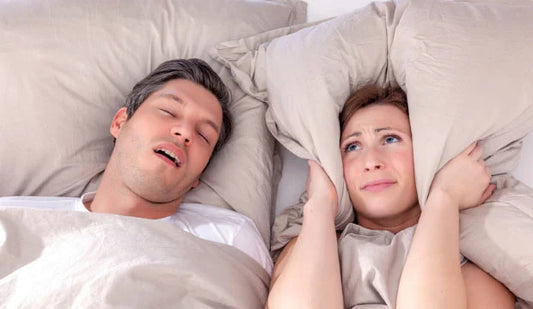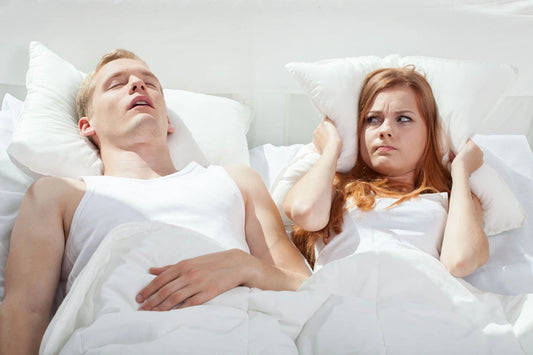A micro-awakening is an abrupt, brief interruption of sleep. The sleeper wakes up for a few seconds to catch his breath and then goes back to sleep.
This phenomenon results in muscular contraction and the opening of the trachea, once again allowing air to pass through.
When the frequency of micro-awakenings is high, we speak of micro-fragmentation of sleep. The greater the number of micro-awakenings, the less restful the sleep, since these micro-sleeps prevent deep sleep deep sleep necessary for recovery.
These multiple interruptions to sleep cycles result in significant daytime fatigue , which can lead to napping, lack of energy and impaired alertness.
What causes micro-awakening?
People who suffer from micro-awakenings at night are unaware that they are constantly waking up. In the absence of a special event or illness that could cause stress, anxiety or insomnia, the doctor may prescribe a polysomnographic examination to discover the reason for fatigue.

This examination reveals the presence of certain sleep-related abnormalities such as breathing difficulties, increased leg movements or abnormal heart rhythms. It also makes it possible to determine when sleep incidents occur and their impact on the different sleep phases (REM, deep or light).
Restless legs syndrome restless legs syndrome causes micro-cuts in sleep, but sufferers are aware of their condition because they also feel discomfort in their lower limbs during the day.
In the case of sleep apnea in the case of sleep apnea syndrome, a person feels very tired in the morning, even though they feel they have slept a sufficient number of hours. She doesn't remember the many micro-awakenings it took to catch her breath.
What impact can micro-awakenings have on your day?
The immediate impact you'll feel as soon as you wake up is slower brain activity, and you'll also feel a lack of muscle tone during the day.
However, if the micro-awakening episodes continue during sleep, several aspects will be affected, such as your circadian rhythm (sleep cycle) and sleep quality.

How to avoid and treat micro-awakenings
If you are prone to nocturnal micro-awakenings, there are several ways to avoid them.
Investing in adapted bedding
When we say bedding, we all think of mattresses, but what's really important today is the pillow! Choosing the right pillow couldn't be easier: your head, neck and spine all need to be aligned!
Your place to sleep!
To avoid micro-sleep at night, you need a dark room and no noise! Indeed, the slightest brightness or noise will agitate your brain and could produce a micro-awakening episode.
A link between micro-awakenings and sleep apnea?
Sleep apnea is a breathing disorder occurring at night. It is characterized either by apnea, which means a cessation of breathing, or by hypopnea, which consists of a reduction in respiratory flow. This disorder is due to total or partial obstruction of the upper respiratory tract, comprising the nose, mouth, pharynx and larynx.
This condition is also known as sleep apnea-hypopnea syndrome (SAHS) or obstructive sleep apnea syndrome (OSA). An apnea can last up to 20 seconds, sometimes more, and can be repeated up to 30 times or more per hour. Each apnea causes a micro-disruption in sleep.
Over 1 Million people in the UK are affected by this syndrome, but the figure would be much higher if all sufferers were diagnosed.
Symptoms that may suggest sleep apnea
As already mentioned, people suffering from micro-awakenings are not aware of it, but many of the numerous symptoms that accompany this disorder:
- heavy snoring and restless sleep
- feeling of suffocation and excessive perspiration during the night
- frequent need to go to the bathroom at night
- wake-up fatigue with headaches
- daytime drowsiness and memory problems
- irritability
- reduced sexual desire.
Causes of sleep apnea
The most common cases of sleep apnea are those caused by upper airway obstruction. This obstruction in adults is often linked to obesity, which is responsible for the formation of fatty tissue that creates an obstacle to the passage of air. 60% of overweight adults are affected by obstructive sleep apnea.
Enlarged tonsils, an excessively long soft palate or a malformation of the lower jaw may also be responsible for pharyngeal obstruction.

Nocturnal apnea, which is always accompanied by micro-sleep interruptions, may also be of neurological origin. This is called central sleep apnea syndrome. In this case, apnea results from an anomaly in the central nervous system, where breathing is controlled.
People affected by sleep apnea
The risk of developing sleep apnea increases with age, but before the age of 60, men are more often affected than women. Beyond this age, both men and women are affected.
Regardless of age, overweight and various metabolic metabolic disorders increase the likelihood of apnea and sleep disruption.
Children can also suffer from partial or total obstruction of the upper airways. Children born prematurely, asthmatics, those suffering from allergic rhinitis or frequent ENT infections, and babies with severe gastro-oesophageal reflux are regularly affected by sleep apnea syndrome. Micro-awakenings in babies and toddlers trigger a hypertonic state, unlike in adults. These children are said to be difficult, but there's a precise cause for their condition. A medical exam is essential.
The consequences of sleep apnea and micro-awakenings
The consequence that most affects sleep apnea sufferers is excessive daytime sleepiness. This fatigue, due to poor quality sleep, affects her life and that of those around her.
What the person doesn't perceive are the consequences of repeated oxygen deprivation, known as hypoxia. Eventually, hypoxia leads to serious problems such as heart attacks, strokes, high blood pressure and sometimes heart rhythm disorders.

- Choosing a selection results in a full page refresh.
- Opens in a new window.







